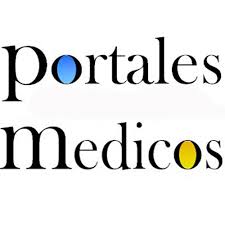Cambios histomorfológicos de la placenta en la diabetes gestacional con una revisión sobre la expresión de CD34
Resumen
La diabetes mellitus gestacional (DMG) presenta riesgos significativos para la salud materna y fetal, influyendo en la estructura y función placentaria. Este estudio investiga los cambios histomorfológicos e inmunohistoquímicos en las placentas de madres diabéticas, con un enfoque particular en la expresión de CD34. Se realizó un análisis prospectivo en 50 placentas de embarazos con DMG. La tinción inmunohistoquímica reveló una fuerte positividad de CD34 en el 74% de los casos, lo que indica un aumento de la vascularización y la densidad de vellosidades. El estudio identificó una correlación significativa entre los niveles elevados de glucosa en sangre materna (PTOG = 140 mg/dL) y una mayor expresión de CD34 (p = 0,010), enfatizando los efectos hipóxicos crónicos de la diabetes en la vasculatura placentaria. Los hallazgos también demostraron cambios vasculares relacionados con la edad gestacional, con el tercer trimestre mostrando los niveles más altos de glucosa y expresión de CD34. Este estudio subraya la importancia de comprender las adaptaciones placentarias en la DMG para mejorar los resultados maternos y neonatales.
Recibido: 17/02/2025
Aceptado: 09/03/2025
Palabras clave
Texto completo:
PDF (English)Referencias
Evers, I. M., de Valk, H. W., Mol, B. W., ter Braak, E. W., & Visser, G. H. (2002). Macrosomia despite good glycaemic control in Type I diabetic pregnancy: Results of a nationwide study in The Netherlands. Diabetologia, 45(11), 1484–1489. https://doi.org/10.1007/s00125-002-0958-7
Pietryga, M., Brazert, J., Wender-Ozegowska, E., Dubiel, M., & Gudmundsson, S. (2006). Placental Doppler velocimetry in gestational diabetes mellitus. Journal of Perinatology, 34(2), 108–110.
Herrick, E. J., & Bordoni, B. (2019, December 7). Embryology, Placenta. StatPearls Publishing. https://www.statpearls.com
Kapila, V., & Chaudhry, K. (2019, February 22). Physiology, Placenta. StatPearls Publishing. https://www.statpearls.com
Saddler, T. W. (2004). Langman’s Medical Embryology (9th ed., pp. 51–134). Lippincott Williams & Wilkins.
Cunningham, F. G., Leveno, K. J., Bloom, S. L., Hauth, J. C., Rouse, D. J., & Spong, C. Y. (2005). Williams Obstetrics (22nd ed.). McGraw-Hill.
Dutta, D. C. (1992). The placenta. In D. C. Dutta (Ed.), Textbook of Obstetrics including Perinatology and Contraception (3rd ed., pp. 28–40). New Central Book Agency.
Boyd, J. D., & Hamilton, W. J. (1970). The Human Placenta (pp. 114–189). W. Heffer & Sons.
Larry, C. R. (2002). Netter’s Atlas of Human Embryology. Icon Learning System.
Singh, I. (2001). Human Embryology (7th ed., pp. 72–73). Macmillan India Ltd.
Benirshke, K., & Kaufmann, P. (1988). Pathology of Human Placenta (4th ed.). Springer.
Kaaja, R. J., & Greer, I. A. (2005, December 7). Manifestations of chronic disease during pregnancy. JAMA, 294(21), 2751–2757. https://doi.org/10.1001/jama.294.21.2751
Smith-Morris, C. M. (2005, April–June). Diagnostic controversy: Gestational diabetes and the meaning of risk for Pima Indian women. Medical Anthropology, 24(2), 145–177. https://doi.org/10.1080/01459740.2005.9966109
Berkowitz, K., Peters, R., Kjos, S. L., Goico, J., Marroquin, A., Dunn, M. E., et al. (1996). Effect of troglitazone on insulin sensitivity and pancreatic beta-cell function in women at high risk for NIDDM. Diabetes, 45(11), 1572–1579.
Langer, O., Yogev, Y., Most, O., & Xenakis, E. M. (2005, April). Gestational diabetes: The consequences of not treating. American Journal of Obstetrics and Gynecology, 192(4), 989–997. https://doi.org/10.1016/j.ajog.2004.12.070
Plows, J. F., Stanley, J. L., Baker, P. N., Reynolds, C. M., & Vickers, M. H. (2018, November). The pathophysiology of gestational diabetes mellitus. International Journal of Molecular Sciences, 19(11), 3342. https://doi.org/10.3390/ijms19113342
Ahmed, S. A., & Shalayel, M. H. (1999, August). Role of cortisol in the deterioration of glucose tolerance in Sudanese pregnant women. East African Medical Journal, 76(8), 465–467.
Briana, D. D., & Malamitsi-Puchner, A. (2009, October). Adipocytokines in normal and complicated pregnancies. Reproductive Sciences, 16(10), 921–937. https://doi.org/10.1177/1933719109344890
Crowther, C. A., Hiller, J. E., Moss, J. R., McPhee, A. J., Jeffries, W. S., Robinson, J. S.; Australian Carbohydrate Intolerance Study in Pregnant Women (ACHOIS) Trial Group. (2005, June 16). Effect of treatment of gestational diabetes mellitus on pregnancy outcomes. New England Journal of Medicine, 352(24), 2477–2486. https://doi.org/10.1056/NEJMoa042973
Xiang, A. H., Peters, R. K., Trigo, E., Kjos, S. L., Lee, W. P., & Buchanan, T. A. (1999, April). Multiple metabolic defects during late pregnancy in women at high risk for type 2 diabetes. Diabetes, 48(4), 848–854. https://doi.org/10.2337/diabetes.48.4.848
Metzger, B. E., Lowe, L. P., Dyer, A. R., Trimble, E. R., Chaovarindr, U., Coustan, D. R., et al.; HAPO Study Cooperative Research Group. (2008, May 8). Hyperglycemia and adverse pregnancy outcomes. New England Journal of Medicine, 358(19), 1991–2002. https://doi.org/10.1056/NEJMoa0802475
DOI: https://www.doi.org/10.53766/AcBio/Se encuentra actualmente indizada en: | |||
 |  |  | |
  |  |  |  |
 |  |  |  |
 |  |  | |
![]()
Todos los documentos publicados en esta revista se distribuyen bajo una
Licencia Creative Commons Atribución -No Comercial- Compartir Igual 4.0 Internacional.
Por lo que el envío, procesamiento y publicación de artículos en la revista es totalmente gratuito.




